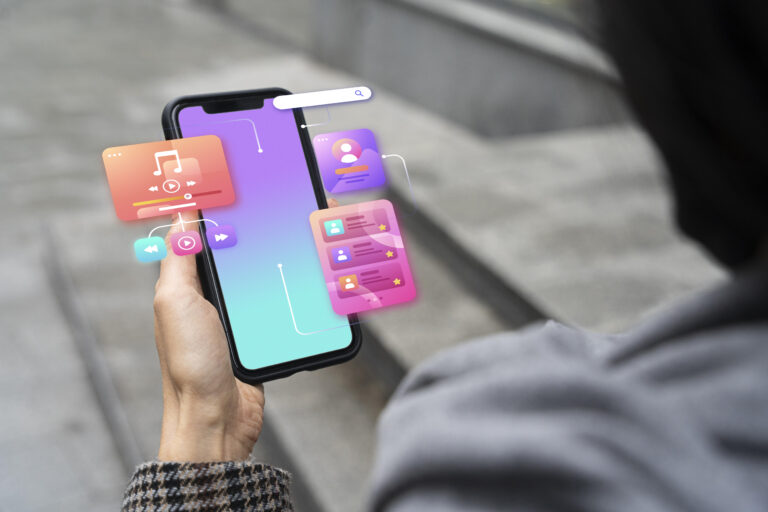Swift and Kotlin are two key technologies used for developing mobile applications for iOS and Android platforms. Let’s compare them to understand which one better suits your company’s needs. Discover how choosing the right language can influence cost optimization and process automation.
What is Swift?
Swift is a programming language created by Apple, specializing in the development of applications for iOS, macOS, watchOS, and tvOS. Since its debut in 2014, it has gained significant popularity thanks to its efficiency, safety, and ease of use.
Why choose Swift?
- Beginner-friendly: Swift was designed with intuitiveness and clarity in mind, making it easier to learn and speeding up the development process.
- Efficiency: Applications built in Swift are typically fast and efficient.
- Security: With built-in safety mechanisms, Swift reduces the number of programming errors.
What is Kotlin?
Kotlin is a modern, statically typed programming language officially supported by Google for Android app development. It was designed to be compatible with Java, making it easier to migrate older projects.
Benefits of using Kotlin
- Cross-platform: Kotlin can also be used to develop applications for iOS and the web.
- Seamless integration: Kotlin works smoothly with existing Java code.
- Support from Google: Kotlin is one of the main languages supported for Android, ensuring its continued growth and compatibility.
Swift vs Kotlin Comparison
| Feature | Swift | Kotlin |
|---|---|---|
| Platform | iOS | Android |
| Release Date | 2014 | 2011 |
| Supported by | Apple | |
| Interoperability | Obj-C | Java |
| Security | High | High |
How to optimize app development costs?
The decision between Swift and Kotlin can have a significant impact on your project’s budget. Choosing a technology tailored to the specifics of the platform allows for efficient use of resources and lower maintenance costs. Learn more about building a cost strategy in our guide: How much does it cost to develop a mobile app?
Case Study: Using Swift and Kotlin in chdr.tech projects
In a project for Client X, where the requirement was a mobile application for both platforms, we applied a hybrid approach—using Swift for iOS and Kotlin for Android. This minimized development time while preserving the unique features of each platform.
Practical tips
When choosing a technology, it’s important to consider your development team’s capabilities and the project’s specific requirements:
- Matching technology to the platform can reduce additional costs related to bug fixing and testing.
- Strong community support and documentation can significantly speed up the development process.
Summary
The decision between Swift and Kotlin should be based on strategic business goals and the specifics of the project. For companies aiming to diversify their offerings across both platforms, cost and development time play a crucial role. It’s also important to consider future needs related to application maintenance and further development. If you want to learn more about technology implementations and process optimization, visit our page on process automation.







